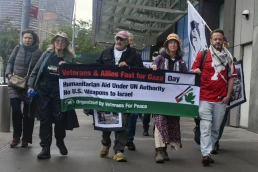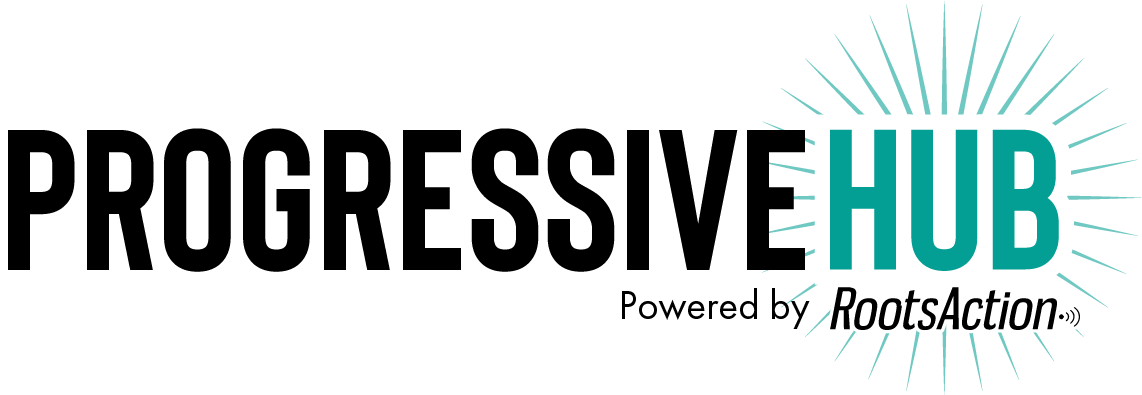As food in Gaza becomes increasingly scarce, activists are pushing their bodies to the limit in solidarity.
By Emmet Fraizer, The Nation
On June 30, Mike Ferner spattered a gallon of cow’s blood over the US Mission to the UN as portraits of Donald Trump and J.D. Vance looked on from behind the glass façade. “Here, United States, have some blood!” he said as it dripped down the windows. “You like shedding it all over the world so much? There you go!”

Ferner, the former national director of Veterans for Peace, then led members and supporters in a march around the block to the Israeli consulate, where the protesters lay down in the street, blocking traffic.
The blood spattering, march, and die-in marked the end of a 40-day fast organized by Veterans for Peace to demand that Israel allow the UN to distribute full humanitarian aid to Gaza and that the US stop sending Israel weapons. Over 800 participants conducted various types of fasts in solidarity, but the core group of Veterans for Peace activists restricted themselves to 250 calories per day—at one point the average daily caloric intake in parts of the Gaza Strip, which doctors consider to be a starvation diet.
Over almost two years of genocide, Gaza has descended into famine and near-famine conditions on a semiregular cycle: people starve to death; after sufficient international outcry, Israel allows food to trickle in; the situation abates a little, until aid is cut off again. This spring, the longest total blockade yet—over 11 weeks—once more prompted warnings about the risk of famine. Over the past month, the IDF has lured starving people to outposts of the US-backed Gaza Humanitarian Foundation, only to gun them down. Hundreds have died.
Recent Posts
Trump Declares Naval Blockade Against Venezuela As Lawmakers Warn Of Unauthorized Act Of War
December 17, 2025
Take Action Now President Trump’s order to block sanctioned oil tankers near Venezuela escalates military tensions, raises constitutional and…
Democratic Governance Depends On Stable, Affordable Housing
December 16, 2025
Take Action Now A population that cannot afford to stay in one place cannot build civic associations, and a society without civic associations cannot…
The Lobby Is Milking The Bondi Beach Attack To Silence Critics Of Israel’s Genocide
December 16, 2025
Take Action Now It is years of dedicated work by the Israel lobby that has ensured the mass murder of Palestinians is viewed by governments, the…
White House Refuses To Rule Out Summary Executions Of People On Its Secret Domestic Terrorist List
December 15, 2025
Take Action Now The Trump administration ignored questions about whether it would order the killings of those on its NSPM-7 list — even while…




